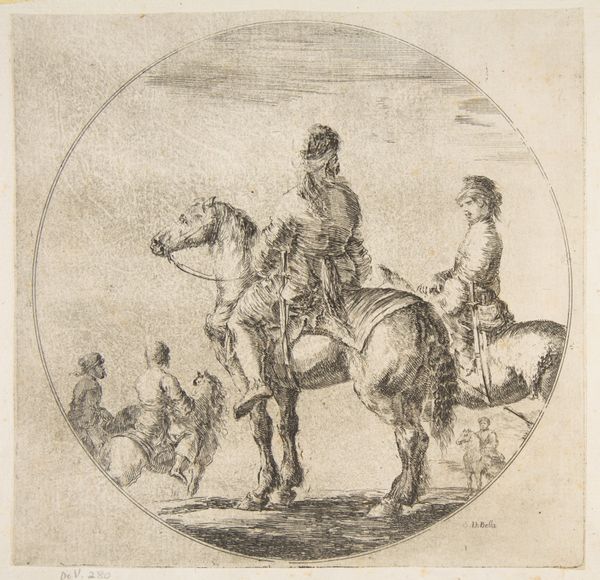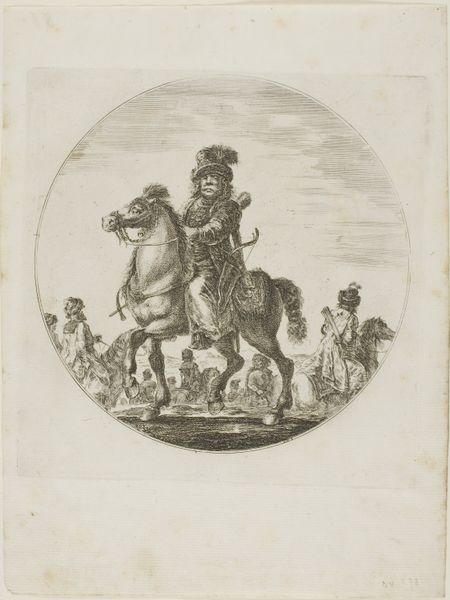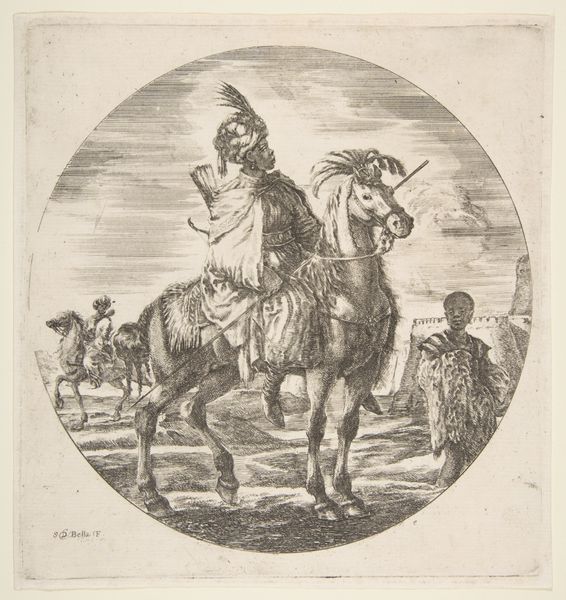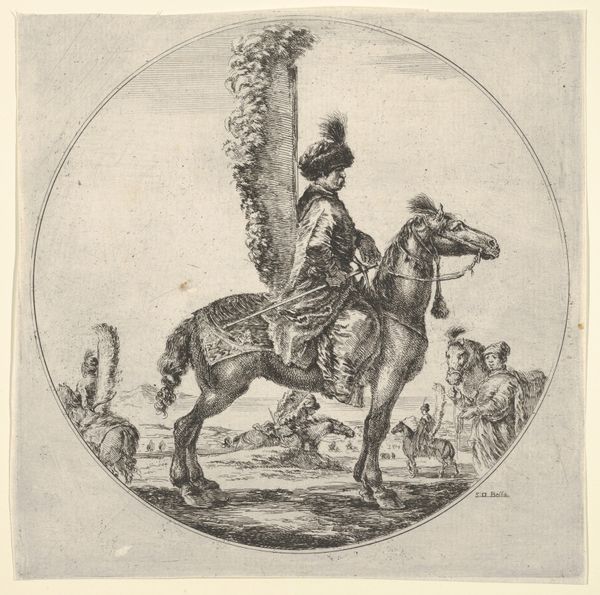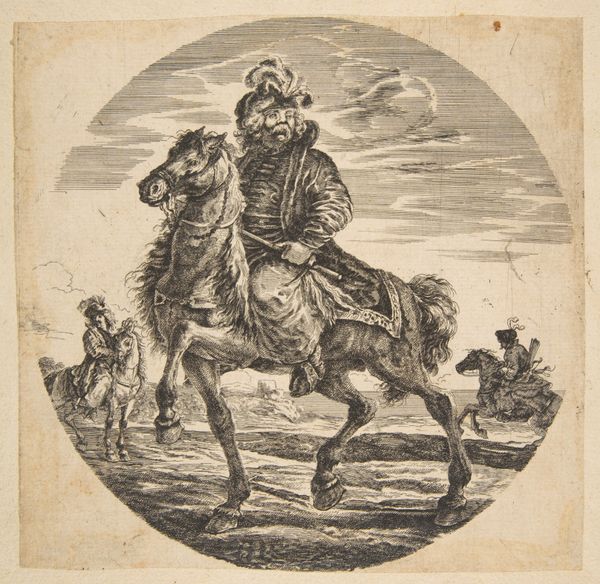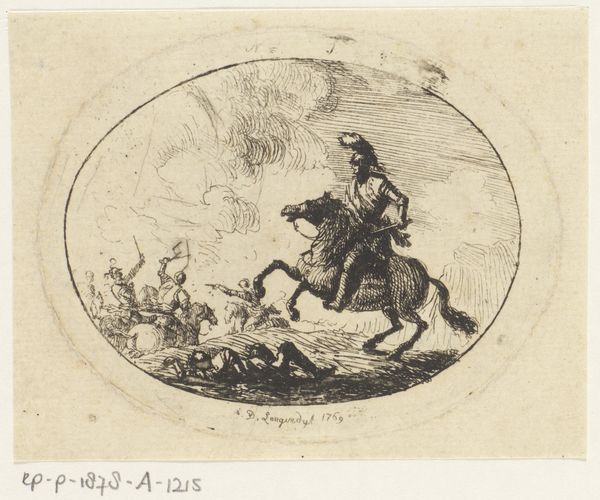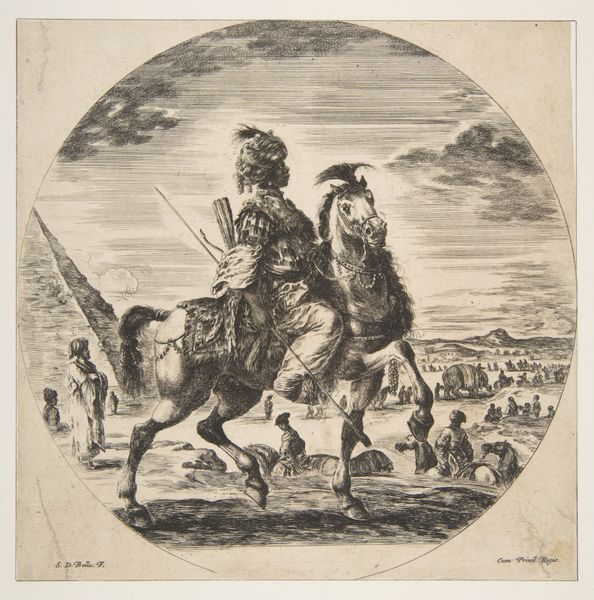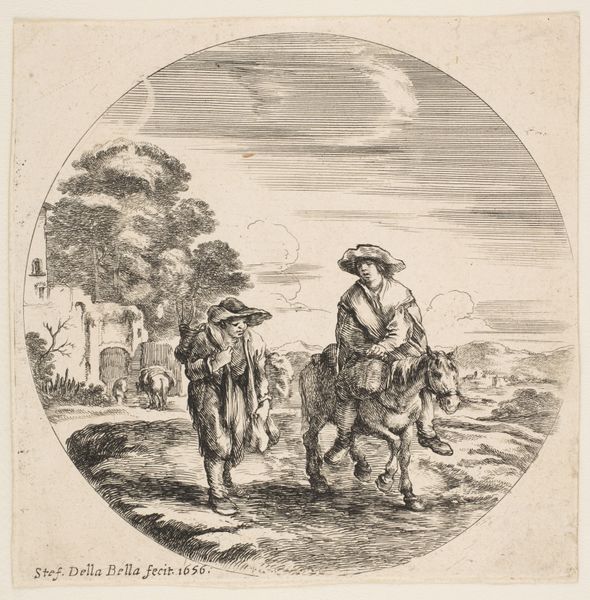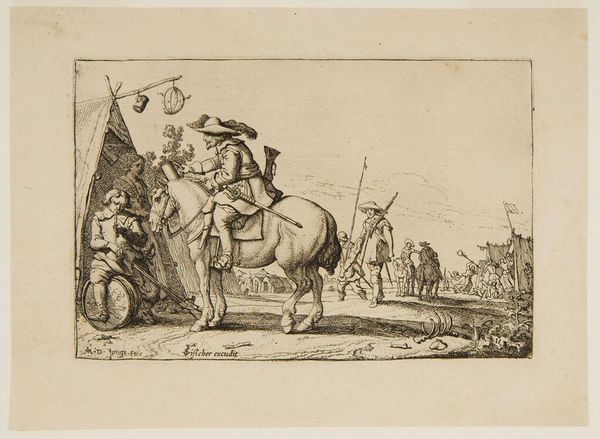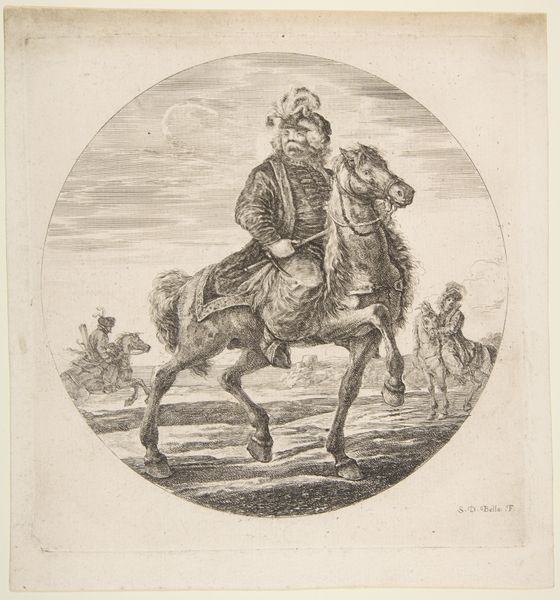
Polish horseman facing right, a circular composition, from 'Figures on Horseback' (Cavaliers nègres, polonais et hongrois) 1646 - 1656
0:00
0:00
drawing, print
#
portrait
#
drawing
#
baroque
# print
#
landscape
#
horse
#
men
#
portrait drawing
Dimensions: Plate: 7 3/8 × 7 1/8 in. (18.8 × 18.1 cm) Sheet: 7 13/16 × 7 3/8 in. (19.8 × 18.7 cm)
Copyright: Public Domain
Editor: Here we have Stefano della Bella's "Polish horseman facing right, a circular composition," made between 1646 and 1656. It's a print displayed inside a circle and it looks pretty detailed and complex, with so many little figures around the main subject. What do you see in this print from a formal perspective? Curator: This circular composition is quite deliberate. Note how the implied lines direct the eye towards the central figure. The meticulousness of line is striking, from the rendering of the horse's musculature to the intricate details of the rider's attire. Consider the strategic placement of light and shadow which accentuates certain elements while allowing others to recede. Editor: I see what you mean. It’s almost like a spotlight effect, focusing on the rider's figure. Is there something else that stands out from a purely structural standpoint? Curator: Indeed. Note the carefully orchestrated relationship between foreground and background. The central figure and horse, rendered with sharp, decisive strokes, are firmly positioned in the foreground. Yet the background, teeming with diminutive figures, never fully resolves, creating an interplay between definition and ambiguity. What kind of effect is it doing? Editor: It gives the eye a place to rest, then something more to explore. How the small characters add visual texture to an otherwise calm, uniform background, really pulls me in! Curator: Precisely. The work utilizes varied densities of marks to suggest form and spatial recession. What conclusions might we draw regarding the artist’s intentions in constructing this highly organized visual system? Editor: So, by paying close attention to things like composition and shading, we learn a lot more about what the artist was going for than if we only think about subject matter. Thanks for pointing out the formal aspects. I will certainly think more analytically about the underlying architecture that forms every painting from now on! Curator: And I, in turn, find the student's initial response enlightening.
Comments
No comments
Be the first to comment and join the conversation on the ultimate creative platform.
